42 Recipes for Surviving Freshman Year (Part 1) by Lydia K. '14, MEng '16
Feeding yourself without a meal plan and avoiding the (negative) freshman fifteen.

Today in Boston it was 41 degrees Fahrenheit and rainy. Random Hall had a massive potluck Thanksgiving dinner with our housemaster Nina and her family, and several smaller Thanksgivings branching off of it (because one wasn’t enough).
I wasn’t there. I was sitting at a picnic table on the edge of a quiet, salty lake, watching my little brother feed geese and seagulls from the bank. I spent Thanksgiving in Myrtle Beach, northern South Carolina, sweater weather.
Like geese, my family migrates when it gets cold every year, to Miami for New Year’s and a Green Christmas and to Myrtle Beach for Thanksgiving and Hanukkah. My parents drove down with my brother from Pennsylvania a week ago and I joined them on Thursday morning (Penn State gets a much longer Thanksgiving break than us). Thanksgiving for me is the beach, yoga classes twice a day, and almost absolutely no work, which is something I was bad at freshman and sophomore year but I’ve gotten better. I think what we eat at Thanksgiving captures a wonderful picture of our cross-cultural family identity. Thanksgiving dinner this year was borscht with garlic and rye bread, turkey with homemade plum sauce, because I’m allergic to cranberries, and farina cake after a walk on the beach and Catching Fire at the movie theater by the yoga studio.
I miss this kind of food when I’m away from my family. Over the past semester I asked my family to teach me how to cook the foods I love, and I’ve been trying to make most of them during actual work weeks. I was surprised that they are almost all very easy to make, and that it’s possible to have a real dinner without taking real time away from studying. Four years ago when I was a senior in high school I tried to learn how to cook from a cookbook but I ended up mostly baking, and everything else was all very hard. Most of what I ate freshman year was cereal and skim milk. I didn’t end up learning the more interesting fast dishes until now.
In celebration of my new steps toward real adulthood, and in belated celebration of Thanksgiving, here are the 42 (plus or minus a few; I kind of cheated) recipes that encompass most of the foods I love. Some are from family, some are from family friends, and a few are from friends at MIT. This blog post is mostly for me but it is also for you, in case you live in a non-dining dorm or you’re not on a meal plan and you want to learn some fast, diverse recipes to get you through the semester.

42. Varieties of oatmeal
Starting with the basics: breakfast, lunch, and snacks on hell weeks.
Effort: 1
Ingredients:
- Quick 1-minute oats
- Milk
- Salt and sugar (or stevia), optional
- Bananas, chopped walnuts, raisins, cinnamon, and allspice; frozen blueberries; or fresh berries
Steps:
- Put in a bowl about half as much oatmeal as you think you want to eat. Add a tiny amount of salt and sweetener and a little more milk than oatmeal. Put a plate under the bowl and microwave on high for a minute and a half, because quick 1-minute is a lie.
- Add cold milk until the oatmeal is whatever consistency you want it to be. Chop up a banana, mix it, some chopped walnuts, and some raisins into the oatmeal, and sprinkle cinnamon and a small amount of allspice on top. If you have time, microwave some frozen blueberries for a minute and add them instead. Or, if they’re on sale, add fresh raspberries, chopped strawberries, or blueberries.
41. Hard boiled eggs
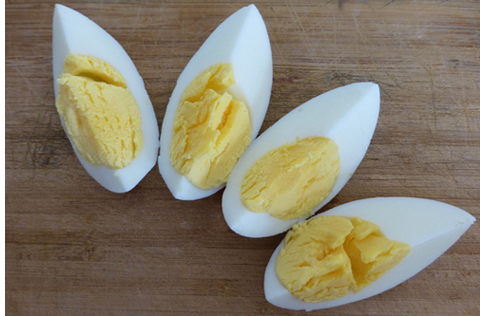 For when you’re kind of hungry and it’s 4 am on Thursday (well, Friday, but you tell yourself it’s still Thursday) and your 5.111 p-set is due in seven hours. At least you almost finished 7.012, 18.02, and 8.01, right?
For when you’re kind of hungry and it’s 4 am on Thursday (well, Friday, but you tell yourself it’s still Thursday) and your 5.111 p-set is due in seven hours. At least you almost finished 7.012, 18.02, and 8.01, right?
Effort: 1
Ingredients:
- Two to four eggs, depending on how hungry you are
- Salt (optional)
Steps:
- Put the eggs in a pot, fill the pot halfway with cold water, and add about a teaspoon of salt. Add the eggs and put them on the stove on high heat.
- After the water boils, turn the heat down to medium and keep the eggs on the stove for an additional six to eight minutes if you like your eggs not fully cooked, or ten to twelve minutes if you like your eggs cooked.
- Pour out most of the hot water and add cold water, and repeat until your eggs are covered in water that is actually cold. Leave them alone for ten minutes while you think about doing part a of problem 3.
- Peel the eggs, rinse them in cold water, and, if you’re feeling ambitious, cut them into slices. If you’re feeling really ambitious, peel and chop a cucumber, too. Eat them off a paper towel. No dishes to wash! You should really work on your time management skills while you’re still on P/NR.
40. Corn
Like hard boiled eggs, and for similar situations, but far less satisfying.
| Effort: 1 Ingredients:
|
Steps:
|
39. Yogurt with chocolate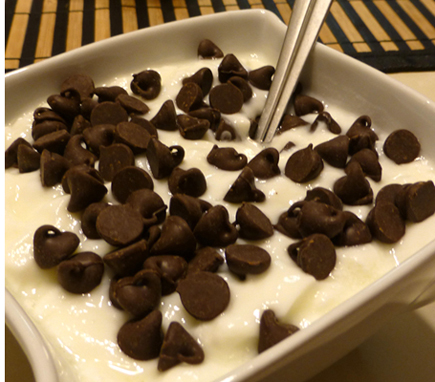
Effort: 1
Ingredients:
- Half a quart of plain, fat-free yogurt
- Semi-sweet chocolate chips, canned pineapple chunks (in 100% pineapple juice, not in heavy syrup), or some other yummy sweet stuff
Steps:
- Put the yogurt in a bowl and stir until smooth. Add some chocolate chips. Alternatively, add half a can of pineapple chunks, with or without chocolate chips. Mmm.
38. Wraps
My friend Masha K. ‘13 from WILG taught me how to do this. It’s a great way to get meat and vegetables when you don’t feel like putting in effort or eating hot dogs beef franks for the third day in a row.
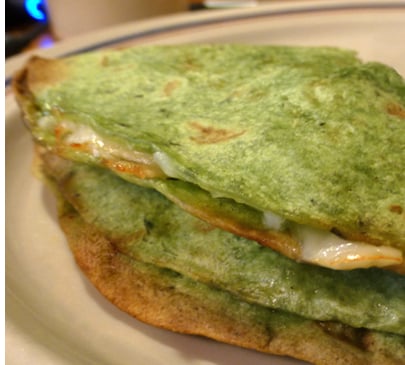 Effort: 2
Effort: 2
Ingredients:
- Spinach (or not spinach) tortilla
- Meat slices, like turkey or beef or whatever is on sale at the deli
- Cheese, like muenster cheese, which is amazing, or whatever else is on sale at the deli
- Tomatoes (if you like tomatoes)
Steps:
- Preheat the oven to 425 or 450 degrees Fahrenheit.
- Place the tortilla on a slightly larger square of aluminum foil.
- Arrange some meat on one half of the tortilla and arrange some cheese on top of it. Add an extra layer of cheese under the meat if you really like cheese.
- Fold the tortilla over the meat and the cheese and fold the aluminum foil over the tortilla. Fold the edges of the aluminum foil so that the tortilla and anything that might melt off of it is trapped inside.
- Put the tortilla in the oven for 15 to 20 minutes. Take it out, remove the aluminum foil, and eat.
- Chop the tomatoes and eat them while you eat the wrap. You can also be adventurous and add the tomatoes to the wrap itself before you cook it, but this will make the wrap slightly soggy. Alternatively, avoid tomatoes like the plague and make weird faces when other people offer them to you, like almost all of the guys I’ve dated at MIT. (I don’t get it either.)
Masha makes wraps in WILG’s tiny electric grill, and not in the oven, and hers end up much better than mine. I will eventually get around to buying a tiny electric grill; if you have one, you should definitely use it.
37. Couscous and beef franks
| Because you’re hungry and desperate and real food is too hard. When Cory ‘14 and I first started dating he was convinced that I only ate couscous and beef franks, because at the time I only ate couscous and beef franks. Effort: 2 Ingredients:
Steps: |
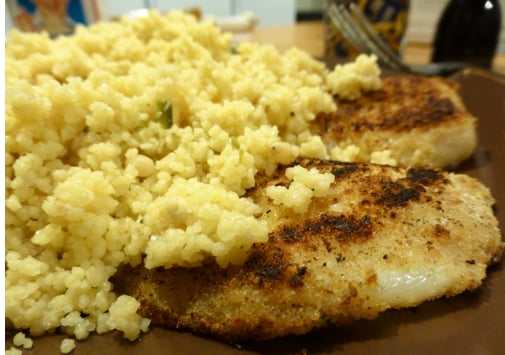 This is a picture of couscous and breaded tilapia, not couscous and beef franks, because I actually have not had couscous and beef franks since summer (which is, I think, an accomplishment). |
| 1. Follow the directions on the box of couscous. Prepare the entire box in a casserole dish. Alternatively, cook spaghetti on the stove. |
|
| 2. Follow the directions on the bag of beef franks. Prepare three or four beef franks on the stove. 3. Chop up the beef franks, add them to the couscous, and eat directly out of the casserole dish. Dinner for two in under ten minutes, minimal dishes, and you can get back to your p-set. |
|
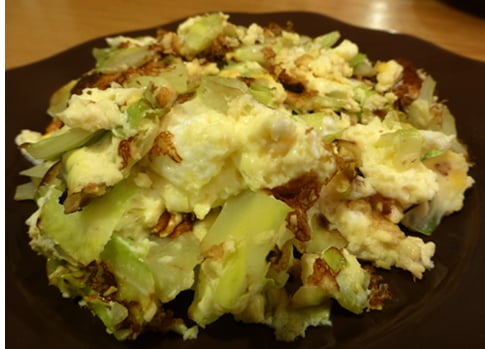 36.a. Eggs with vegetables
36.a. Eggs with vegetables
Effort: 2
Ingredients:
- Two or three eggs
- Broccoli, cabbage, or a more creative vegetable
- Olive oil
- Salt
Steps:
- Wash and chop the broccoli or cabbage. Put it in a pan with olive oil and cook on high for a few minutes while the pan heats up.
- Add the eggs and a small amount of salt over the broccoli. Throw the eggs and the broccoli around in the pan with a spatula until they are cooked. This goes well with fried potatoes.
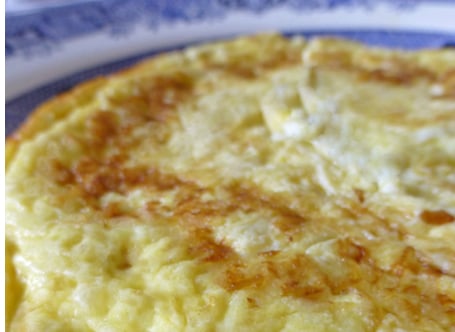 36.b. Omelet
36.b. Omelet
This is a little more difficult.
Effort: 2
Ingredients:
- Two eggs
- Milk
- Broccoli, cabbage, or beef franks (optional)
- Olive oil
- Salt
Steps:
- If you want them in your omelet, chop broccoli, cabbage, or beef franks, put them in a pan with olive oil, and cook on high while the pan heats up.
- In a small food processor, mix the eggs, about one eighth a cup of milk, and a small amount of salt. Don’t add salt if you are including beef franks. Pour the mixture over the vegetables or beef franks, decrease the heat to medium or low, and cover.
- Check every now and then that the underside isn’t burning. When it is solid enough, flip the omelet with a spatula (or cut it in half and flip each half individually).
- When the omelet is done, you can use the empty hot pan to make toast.
35. Cauliflower
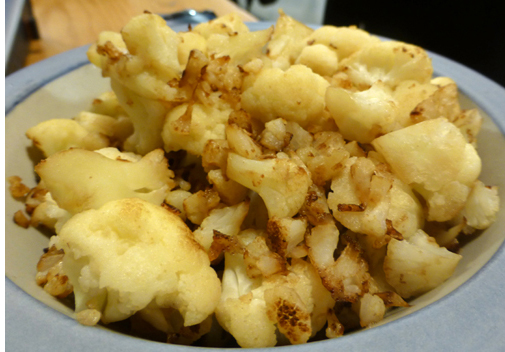 This and omelets has been my breakfast lately.
This and omelets has been my breakfast lately.
Effort: 2
Ingredients:
- Cauliflower
- Olive oil
- Salt
Steps:
- Rinse and chop as much cauliflower as you want to eat, which is probably less than you think it is.
- Pour a few tablespoons of olive oil onto a pan. Add the cauliflower.
- Fry on medium to high heat, uncovered, until the cauliflower is browned.
34. Stuffed shells
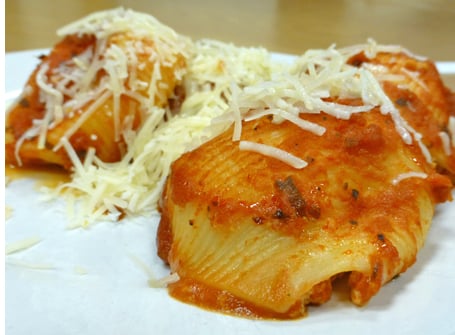 This is sometimes a staple for me. You buy them at the grocery store, in the frozen section.
This is sometimes a staple for me. You buy them at the grocery store, in the frozen section.
Effort: 2
Ingredients:
- Frozen stuffed shells from the grocery store
- Pasta sauce
Steps:
- Put the shells on some aluminum foil on a baking sheet and cover them in pasta sauce. Put them in the oven for 45 minutes as prescribed by the box they came in.
33. Coleslaw
Effort: 2
Ingredients:
|
|
|
Steps:
- Peel one or two carrots. Chop the carrots and about twice as much cabbage so that they can fit in the tiny food processor.
- Combine the carrots, cabbage, and a tablespoon or two of mayonnaise in the food processor.
32. Shrimp (grey; not pre-cooked)
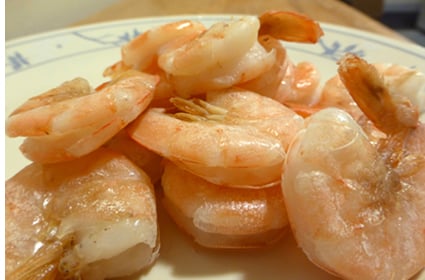 Effort: 2
Effort: 2
Ingredients:
- Frozen grey shrimp (not pre-cooked)
- Bay leaves and whole black peppercorns (or other spices)
- Pasta sauce (optional)
- Horseradish (optional)
Steps:
- Boil water in a pot with whatever spices you have. My family uses bay leaves and whole black peppercorns.
- About five minutes after the water boils, it should be a darker color. Add the frozen shrimp.
- Separately, mix about equal parts horseradish and pasta sauce to make a sauce to dip the shrimp in.
- Remove the shrimp as soon as the water starts to boil again.
31. Fried shrimp (red; pre-cooked) with vegetables
This is my maternal grandmother’s recipe.
Effort: 2
Ingredients:
|
|
Steps:
- Leave the shrimp on the table for about two hours to thaw, allowing the water to drain from the shrimp.
- Chop the garlic cloves a little, so that their insides are exposed, and put them in a pan with olive oil on high heat. Add spices, such as curry and black pepper. Add the thawed shrimp.
- Cook the shrimp for three to five minutes on the stove, stirring occasionally. Don’t worry if water appears.
30. Bubble tea
If you don’t know what bubble tea is, you will when you get to campus. It is sweetened milk tea with tapioca bubbles. It is addicting. It is sold at the Student Center for $3 a serving.
 Effort: 2
Effort: 2
Ingredients:
- Tapioca bubbles
- Honey or fruit preserves
- Tea
- Milk
- Bubble tea straws
Steps:
- Buy tapioca bubbles. After some research I bought these. I store them in a zip-lock bag in the freezer so they don’t dry out. You can buy the fat straws on Amazon as well.
- Boil water in an electric tea kettle or on the stove, as much as you can imagine you and your friends drinking in one sitting. Add several (three to six) bags of whatever tea you want to drink. When the tea is done steeping, move the pot or the tea kettle to the fridge to cool.
- Boil water in a pot. Once the water is boiled, add a very small handful of tapioca bubbles for every two people. They will expand in the water.
- After five minutes, remove the tapioca bubbles from the water and put them in a cup. Cover them in honey or fruit preserves. I think fruit preserves work better than honey, but other people (sample size two) disagree.
- After a while the tapioca bubbles should have soaked up some of the honey or fruit preserves. Distribute the tea, add milk, and add the tapioca bubbles. Drink with a bubble tea straw.
Real bubble tea is prepared with some powder instead of just tea and milk. I haven’t figured this out yet and I’m probably not going to, because I’m happy with tea and milk, but you might want to.
29. Блины (crepes)

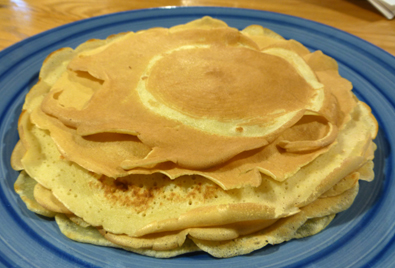
Crepes seem to be a fundamental part of womanhood in Russia, and I am horrible at them. There’s some intuitive awareness of the texture and thickness of batter, the technique, the art, the практика, that I never absorbed, despite hours of education from my grandmother on my dad’s side. One day when I was homesick I tried the first crepe recipe that came up on Google and it worked, практика or not, though of course it’s nowhere near as good as my mom’s or either of my grandmothers’. Here it is, more or less—
Effort: 3
Ingredients:
|
|
|
Steps:
- Blend two eggs in a small food processor.
- Add a cup of milk and blend again.
- Add 1/4 teaspoon of salt and one cup of flour. If you want to be healthy, you can use gluten-free flour, which ends up tasting about the same. Blend again.
- Heat a few tablespoons of olive oil on high heat. Pour one fourth a cup of batter onto the pan and spread it evenly by tilting the pan in a circular motion. The first crepe will take a while to cook.
- Once the edges of the crepe are well defined and slightly raised, lift the crepe from the edges with a spatula and flip it. At this point you can turn the heat down to medium or medium-high. Periodically check the underside of the crepe; when it is slightly browned, take it off the pan. The first crepe will probably not be as good as the rest of them, since it picks up a lot of the olive oil.
- Immediately after removing the first crepe, pour another one fourth cup of batter onto the pan. Again spread the batter evenly over the pan by tilting it in a circular motion; this will be more difficult now because the pan is hot and the crepe is cooking as you shape it.
- Repeat until you have run out of batter. From here on out, the crepes will be ready to flip almost immediately, though the second side will take a bit longer to cook. It might be a good idea to stir the batter sometimes; otherwise the flour settles and you have to add more milk to make the last few crepes.
- Spread a thin layer of sugar, honey, jam, or caviar onto one surface of each crepe and roll them up into tubes. Keep in mind that you will have layers and layers of filling in each bite, so the layers should be very thin, especially if the filling is sweet.
The last crepe is always the tiniest, and when I was little that one was always mine because I was tiny, too. :)
28. Latkes (potato pancakes)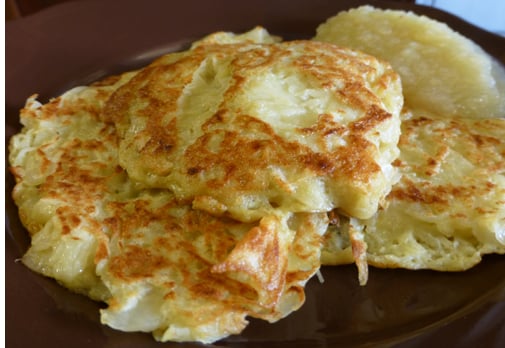
Effort: 3
Ingredients:
- Eggs
- Potatoes
- Salt
- Olive oil
- Applesauce, sour cream, or plain yogurt (optional)
Steps:
- Break two eggs on a plate.
- Peel three or four potatoes. Using a cheese grater, grate the potatoes over the eggs. Add about half a teaspoon of salt and mix the potatoes, eggs, and salt with a fork. If there is any egg that isn’t covered by the potatoes you can add another potato.
- Pour some olive oil out onto a pan and turn the heat up to high. Add the potato mixture in separated, one-tablespoon-large, flat circles. They should sizzle once the pan is hot; turn the heat down to medium or medium high if that bothers you.
- When the latkes are browned on one side (only the potato pieces that were touching the pan will brown), flip them over with a spatula.
- When the other side is brown, remove them and add more potato mixture to the pan. Add more olive oil if there isn’t any. Keep doing this until you have run out of potato mixture.
- Dip the latkes into applesauce, sour cream, or plain yogurt as you eat them.
27. Baked salmon
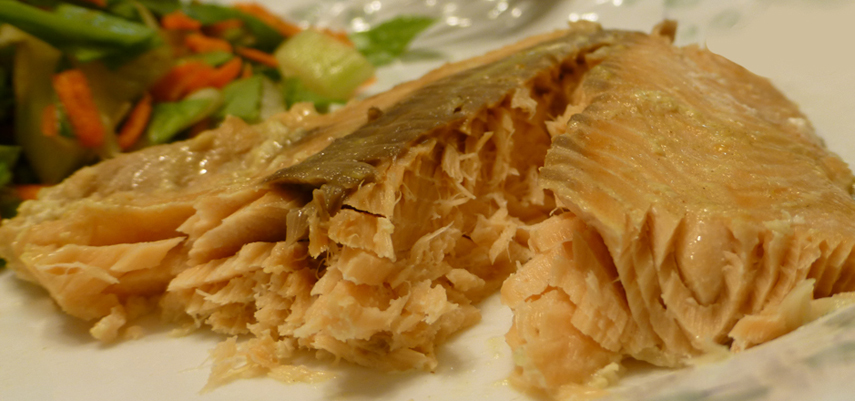
Effort: 3
Ingredients:
|
|
Steps:
- Leave the salmon on the table in its plastic wrapping for four hours or so to defrost. Alternatively, soak it (again still in its plastic wrapping) in warm water until it is bendy.
- Preheat your oven or toaster oven to 450 degrees Fahrenheit.
- Cover a baking sheet with enough aluminum foil for the fish to be in one layer, leaving enough overhang to cover the fish. Unwrap the fish and put it on the foil. Lightly salt and add some lemon juice.
- Mix one tablespoon each of mustard, honey, and ranch dressing and two tablespoons of olive oil until the color is uniform. Spread the mixture over the fish.
- Cover the fish with the aluminum foil overhang and put it in the oven for about half an hour. Salmon goes well with rice or salad.
26. Salad
|
Effort: 3
|
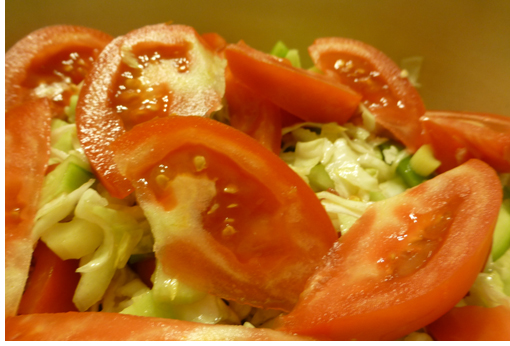 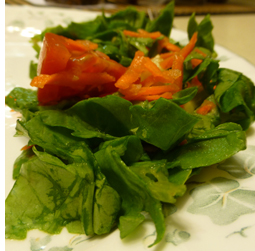 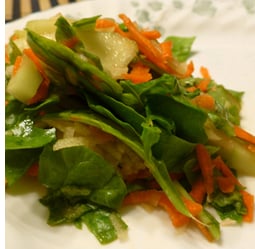 |
My grandmother on my mom’s side advises that when you’re mixing salad you should lift it, not push down on it.
25. Hamburgers on rye bread
Effort: 3
Ingredients:
|
|
Steps:
- Leave the frozen hamburgers on a plate for a few hours to thaw.
- Fry the hamburgers with a little bit of olive oil on medium heat (or low heat if you forgot to thaw them). Flip them over and fry them some more until you are satisfied with how much they are cooked.
- Wrap the burger in spinach or lettuce and put it between two slices of bread. Tomatoes are optional.
24. Stir-fry
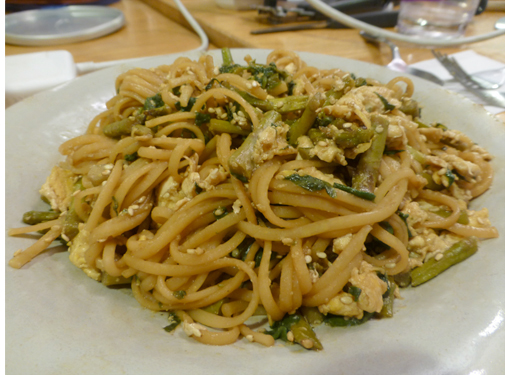 Effort: 3
Effort: 3
Ingredients:
- Linguine fini pasta, or some other spaghetti
- Asparagus
- Spinach
- Two eggs
- Stir-fry sauce
- Olive oil
- Sesame seeds
- Garlic
Steps:
- Cook the pasta al dente according to the instructions on the box, probably six minutes in boiling water. You don’t need to add salt.
- While the pasta is cooking, chop the asparagus into one- to two-inch-long pieces, throwing away the lighter edges opposite the tips, and fry it in olive oil, uncovered, on medium to high heat.
- Drain the pasta and add it to the asparagus. Stir about one fourth cup stir-fry sauce into the pasta with a spatula.
- Move the pasta over to one side of the pan and cook an egg on medium heat on the other half, stirring it often. Stir the egg into the pasta once it is at least slightly cooked.
- Turn the heat down to low or medium-low. Rinse a handful of spinach and add it to the pasta. Fold the pasta over the spinach so that the spinach is covered. Cover the pan with a lid.
- When almost all of the liquid has boiled off the pasta, chop and add some garlic. Add some sesame seeds. Remove from heat.

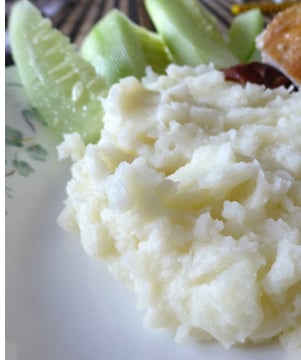 23. Mashed potatoes
23. Mashed potatoes
Effort: 3
Ingredients:
- Potatoes
- Salt
- Whole milk
- Butter (optional)
Steps:
- Boil water in an electric tea kettle or on the stove.
- Meanwhile, fill a pot halfway with water. Peel however many potatoes you think you’ll eat, chopping larger ones in half if they are of variable size. Leave them in the water while you peel the others.
- Drain the cold water and cover the potatoes completely with boiling water. Add a tablespoon of salt.
- Cook on the stove until the potatoes slide off when you stab them with a fork. The Internet says you can prevent the water boiling over by balancing a wooden spoon on top of the pan; you should let me know if that works and, if so, how.
- Microwave half a cup of milk on high for one minute.
- Drain the water completely. Add the milk and mash the potatoes with a potato masher (or a fork, because come on, you’re a college student). Add butter if you want.
22.a. High-maintenance fried potatoes
This is how my dad cooks potatoes and how his dad cooked potatoes. They come out perfectly, evenly cooked—edible masterpieces of potato.
Effort: 3
Ingredients:
|
|
|
Steps:
- Peel two or three potatoes and chop them into five-millimeter-thick circles or half-circles.
- Coat the pan in olive oil and lay the potatoes on the pan in one layer and salt them lightly. Cook uncovered on high.
- When the potato slices are brown on one side, flip each slice individually and cook until the other side is brown as well.
- Remove the potato slices and repeat with the next batch, until you have cooked all of your potatoes.
22.b. Low-maintenance fried potatoes
This is how I cook potatoes because I am lazy and unskilled. They come out crunchy-raw in some places and almost burnt in others but I’m usually too hungry to care.
Effort: 3
Ingredients:
|
|
|
Steps:
- Peel two or three potatoes and chop them into two- to five-millimeter-thick circles or half-circles.
- Coat the pan in olive oil, put all the potato slices on the pan, and salt them lightly. Cook uncovered on high, flipping them often. Remove the potato slices when they are brown in some places, not yet charred, and not unbearably crunchy.
21. Potatoes in the microwave
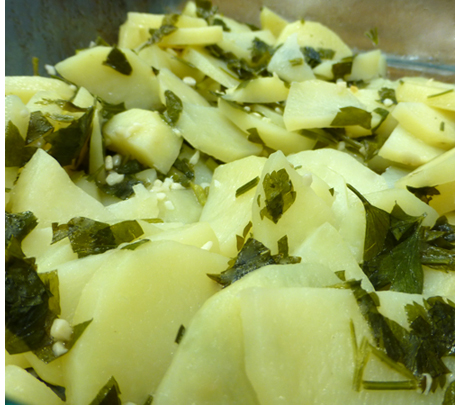 This is how my grandmother on my mom’s side cooks potatoes. It is simple and fantastically fast.
This is how my grandmother on my mom’s side cooks potatoes. It is simple and fantastically fast.
Effort: 3
Ingredients:
- Potatoes
- Fresh dill
- Garlic
- Olive oil
- Salt
Steps:
- Peel the potatoes and chop them into large but bite-sized pieces. Put them in a casserole dish.
- Finely chop some dill and about one clove of garlic for every three medium-sized potatoes and add them to the potatoes.
- Add half a teaspoon of salt and one tablespoon of olive oil for every three potatoes. Mix thoroughly.
- Cover firmly and microwave on high for about ten minutes for three potatoes, or fifteen minutes for six potatoes.
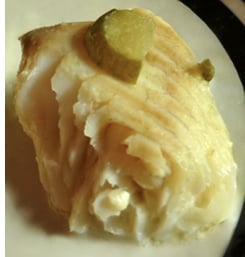 20.a. Tilapia in the microwave
20.a. Tilapia in the microwave
This recipe is from my mom. It is impressively fast.
Effort: 3
Ingredients:
|
|
Steps:
- Leave the tilapia out on the table in one layer (still in its plastic wrapping) for an hour to thaw. (Alternatively, rinse it under cold water, again still in its plastic wrapping.)
- Put the thawed tilapia in one layer in a casserole dish. Add a small amount of salt.
- Chop the pickles into small pieces and put them over the fish.
- Wash a lemon well, with soap, chop it in half, and squeeze it over the fish, being careful to remove any seeds. Chop the rest of the lemon into small pieces, including the skin, and put it over the fish.
- Spread two tablespoons of mayonnaise over the fish and lemon.
- Cover the casserole dish and put it in the microwave for ten minutes for five fish, or five to seven minutes for two. The fish is done when you can easily cut it with a fork and it is white all the way through.
20.b. More tilapia in the microwave
This recipe is from my grandmother on my mom’s side.
Effort: 3
Ingredients:
|
|
|
Steps:
- Leave the tilapia out on the table in its plastic wrapping in one layer for an hour (or rinse it under cold water) to thaw.
- Cut the tilapia in half (to create two fat halves rather than two long halves).
- Rinse and chop the bell peppers, tomatoes, basil, and dill and place some of it in the casserole dish.
- Place the tilapia in one layer on top of the vegetables.
- Lightly salt the fish and vegetables.
- Add a second layer of chopped bell peppers, tomatoes, basil, and dill on top of the tilapia.
- If you need to, add another layer of tilapia and another layer of vegetables, or more, lightly salting each layer of tilapia.
- Add three or four tablespoons of olive oil on top of the tilapia and vegetables.
- Cover the tilapia and microwave it on high for twelve to fifteen minutes, depending on the quantity.

I tried to fit all of the recipes in one blog post but the web site wouldn’t let me. Part 2 contains another 19 recipes, most of them a little more hardcore. There are also some places to buy food around MIT and some non-food things that are useful to have.
